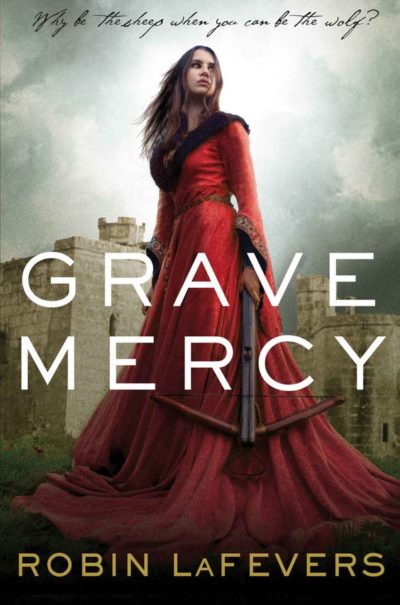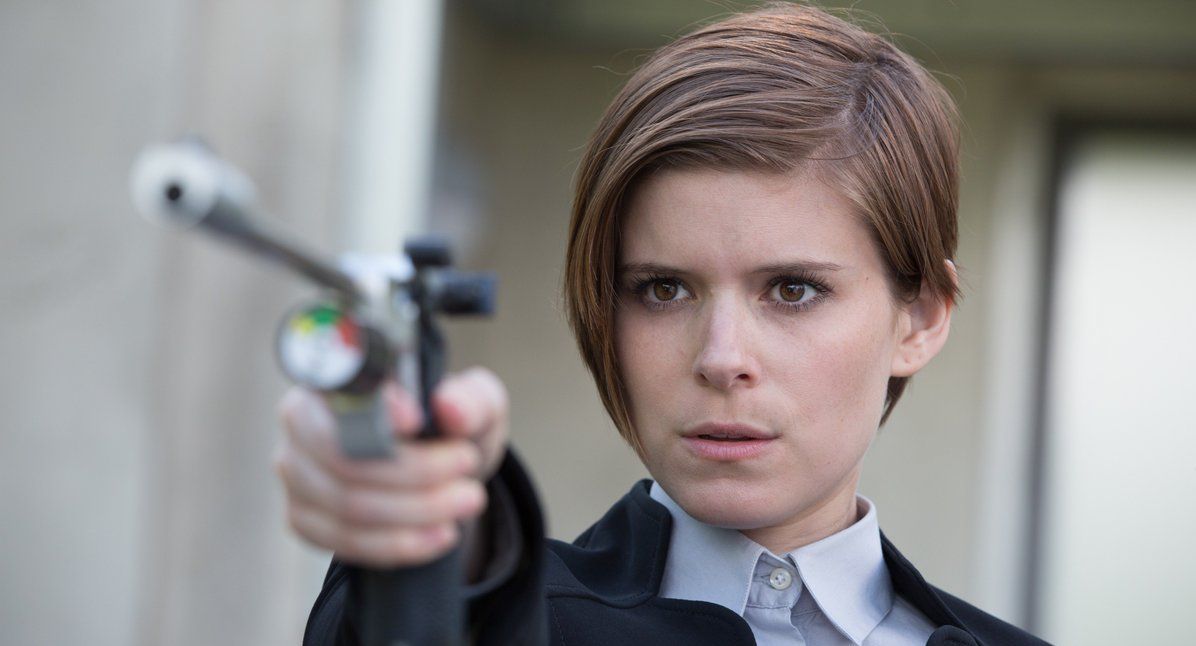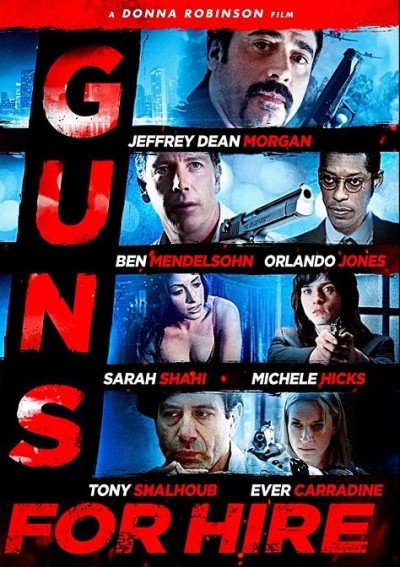★★★½
“Action cinema levels up in Korea.”
 This opens with a blistering seven minutes of action which starts off in first-person perspective, looking like the most deranged video game ever, as the protagonist slices, dices and shoots their way through a building to a confrontation with the final boss. After being slammed head-first into a mirror, the point of view changes and we see the attacker is a young woman, Sook-hee (Kim Ok-bin). Finishing her slaughter, she calmly accepts arrest, but the Korean intelligence services recruit her, hoping to channel her skills to their own ends, after a spot of plastic surgery to ensure a fresh start. When training is completed, under Chief Kwon (Kim Seo-hyung), she’s given an apartment, unaware that the man next door, Jung Hyun-soo (Sung), is actually her handler. However, he’s not the only person with something to hide. Because Sook-hee is out to leverage her new position, and is still after long-awaited revenge on the man who killed her father.
This opens with a blistering seven minutes of action which starts off in first-person perspective, looking like the most deranged video game ever, as the protagonist slices, dices and shoots their way through a building to a confrontation with the final boss. After being slammed head-first into a mirror, the point of view changes and we see the attacker is a young woman, Sook-hee (Kim Ok-bin). Finishing her slaughter, she calmly accepts arrest, but the Korean intelligence services recruit her, hoping to channel her skills to their own ends, after a spot of plastic surgery to ensure a fresh start. When training is completed, under Chief Kwon (Kim Seo-hyung), she’s given an apartment, unaware that the man next door, Jung Hyun-soo (Sung), is actually her handler. However, he’s not the only person with something to hide. Because Sook-hee is out to leverage her new position, and is still after long-awaited revenge on the man who killed her father.
With a storyline that’s little more than equal parts of Nikita and Kill Bill, deep-fried in a crimson vat, the only way this is going to survive is to be all about the style. Fortunately, it delivers on that aspect by the bucket. I watched that opening sequence three times before I could bring myself to proceed, and other set-pieces are almost as spectacular (and slightly less motion sickness inducing!), such as the sword-fight on speeding motorbikes. Or the final battle on a bus. Or… Yeah, let’s just say, when this is in motion, it’s utterly glorious, demented and bloody beyond belief. The problems are when it isn’t, with a horribly muddled narrative structure which also seems cribbed from Tarantino. So it’s extremely heavy on the flashbacks, and leaps around the heroine’s time-line like an amphetamine crazed mountain-goat. The payoff, when it arrives, certainly isn’t worth the effort: I’d figured it out, well before the dramatic revelation arrives on-screen.
So convoluted and murky is the story, that I found myself increasingly tuning out, and was more or less disinterested in the characters’ fates, most damningly that of Sook-hee. About the only person I cared about was her little, moon-faced daughter, whose serious expressions provoked more emotion in me than all the contortions performed by the plotting. Director Jung, like David Leitch of Atomic Blonde, has a background as a stuntman before moving into direction, and perhaps that explains why it feels as if the attention and effort here have gone into those elements. In comparison, the script is something which could well have been cobbled together on the back of a beer-mat, after an all-night video session, and then run through a shredder in an attempt to instill it with some artistic merit. Jung is certainly an action director to watch, and I’ll be very interested to see where he can possibly go from here. Is there a setting for cinematic violence above eleven?
Dir: Jung Byung-gil
Star: Kim Ok-bin, Shin Ha-kyun, Sung Joon, Kim Seo-hyung






 You could call this a foul-mouthed, borderline misogynist, zero budget piece of trash, with no coherent plot, where it seems every other word is a F-bomb or C-missile, and most of the lines are not so much spoken, as yelled. I wouldn’t argue with such an assessment, and understand perfectly why it is rated 1.4 on IMDb. And, yet… It has a relentless and manic energy which makes Crank look like a Merchant-Ivory costume drama. Put another way: unlike the overlong Rogue One, I did not fall asleep here, and it will likely stick in my mind longer than the three other, far more polished productions, which I watched the same day. Probably because, unlike this, they did not have a topless little person being tossed off a roof.
You could call this a foul-mouthed, borderline misogynist, zero budget piece of trash, with no coherent plot, where it seems every other word is a F-bomb or C-missile, and most of the lines are not so much spoken, as yelled. I wouldn’t argue with such an assessment, and understand perfectly why it is rated 1.4 on IMDb. And, yet… It has a relentless and manic energy which makes Crank look like a Merchant-Ivory costume drama. Put another way: unlike the overlong Rogue One, I did not fall asleep here, and it will likely stick in my mind longer than the three other, far more polished productions, which I watched the same day. Probably because, unlike this, they did not have a topless little person being tossed off a roof. If you want something more cerebral and family friendly than
If you want something more cerebral and family friendly than  Maggie Marvel (Beretta) is a single mom, with all the issues that implies. She has to try and juggle work with raising young daughter, Samantha (Katherine Brennan), on her own. But complicating matters enormously, is that work in this case is operating as an assassin for criminal kingpin Dutch – who also happens to be Maggie’s estranged father, who sent her away after his wife (and thus, Maggie’s mother) tried to poison him. Maggie was raised instead by Dixie Brown (Barron), who also works for Dutch as a killer. For he believes women are better at the job, and though he employs men, such as Bobby Shea (Dan Brennan) and his brothers, they are kept for non-lethal work. However, this line gets blurred as Bobby has fallen for Dixie, and his request that Maggie work with him on a bank robbery – hoping to make Dixie jealous – kicks off a series of events that threaten to destroy Maggie, her family and the entire crime organization.
Maggie Marvel (Beretta) is a single mom, with all the issues that implies. She has to try and juggle work with raising young daughter, Samantha (Katherine Brennan), on her own. But complicating matters enormously, is that work in this case is operating as an assassin for criminal kingpin Dutch – who also happens to be Maggie’s estranged father, who sent her away after his wife (and thus, Maggie’s mother) tried to poison him. Maggie was raised instead by Dixie Brown (Barron), who also works for Dutch as a killer. For he believes women are better at the job, and though he employs men, such as Bobby Shea (Dan Brennan) and his brothers, they are kept for non-lethal work. However, this line gets blurred as Bobby has fallen for Dixie, and his request that Maggie work with him on a bank robbery – hoping to make Dixie jealous – kicks off a series of events that threaten to destroy Maggie, her family and the entire crime organization. This works rather better as historical fiction than an action novel, and is set in the late 15th century, when the province of Brittany was fighting to remain independent from France. Such high-level political machinations are far above the heads of most inhabitants, who are busy with everyday survival. At the beginning of the book, this includes the heroine, 17-year-old Ismae, who is more concerned about her upcoming, unwanted marriage – more of a sale by her father, to be honest – to a brutal husband. Rescue comes in an unexpected form, as she is whisked away to the Convent of St. Mortain, devoted to one of the pagan gods, absorbed into the Catholic faith as a saint. Mortain’s field is death, and Ismae, who has a natural immunity to poison, is trained in his dark arts. She becomes a tool used by the Mother Superior – albeit for political ends as much as religious ones.
This works rather better as historical fiction than an action novel, and is set in the late 15th century, when the province of Brittany was fighting to remain independent from France. Such high-level political machinations are far above the heads of most inhabitants, who are busy with everyday survival. At the beginning of the book, this includes the heroine, 17-year-old Ismae, who is more concerned about her upcoming, unwanted marriage – more of a sale by her father, to be honest – to a brutal husband. Rescue comes in an unexpected form, as she is whisked away to the Convent of St. Mortain, devoted to one of the pagan gods, absorbed into the Catholic faith as a saint. Mortain’s field is death, and Ismae, who has a natural immunity to poison, is trained in his dark arts. She becomes a tool used by the Mother Superior – albeit for political ends as much as religious ones.


 Stephanie (Powell) had been an assassin for the Italian Mafia, but had abandoned that life and settled down in London with her daughter. Years later, she is shocked to see her former lover, Alessandro (Canuso) show up at her job, and even more so when she gets an order she can’t refuse from her old employer, Franco (Gambino) – to kill Alessandro. Despite some qualms, not least how the family will react to her taking out one of their own, Stephanie carrier out the mission. But soon after, she finds herself being watched by the enigmatic Sam (Leese), who says he is there to protect her. Is that really the case, or does he have an entirely different purpose?
Stephanie (Powell) had been an assassin for the Italian Mafia, but had abandoned that life and settled down in London with her daughter. Years later, she is shocked to see her former lover, Alessandro (Canuso) show up at her job, and even more so when she gets an order she can’t refuse from her old employer, Franco (Gambino) – to kill Alessandro. Despite some qualms, not least how the family will react to her taking out one of their own, Stephanie carrier out the mission. But soon after, she finds herself being watched by the enigmatic Sam (Leese), who says he is there to protect her. Is that really the case, or does he have an entirely different purpose?